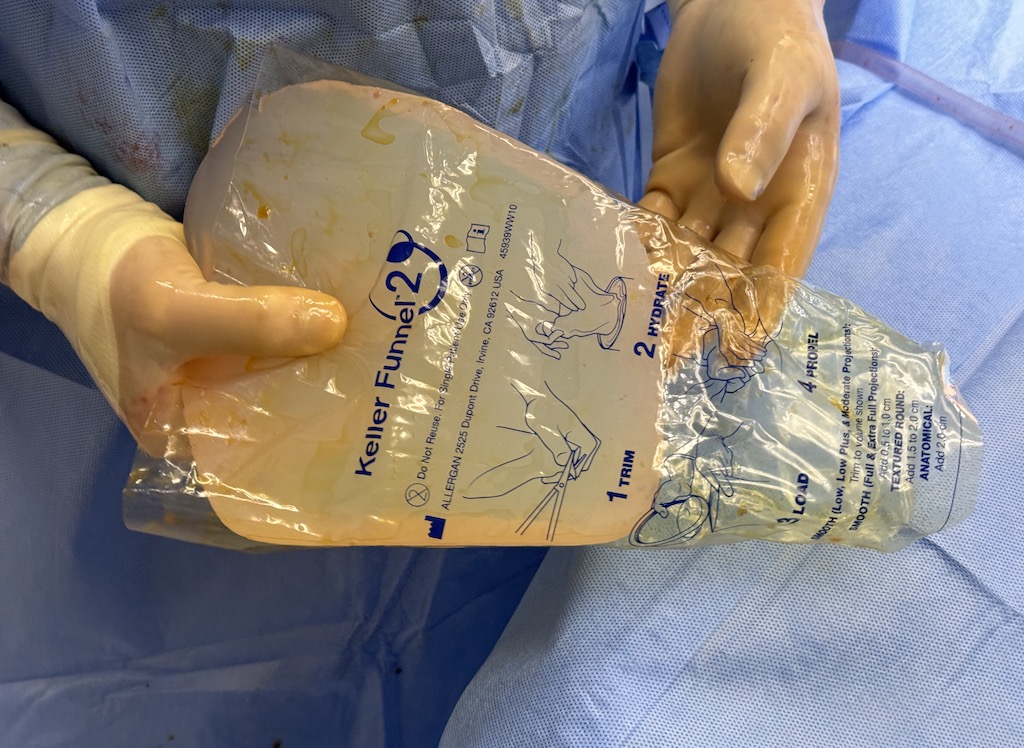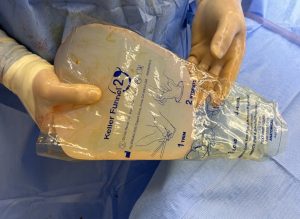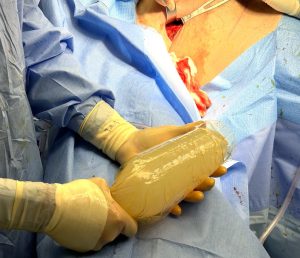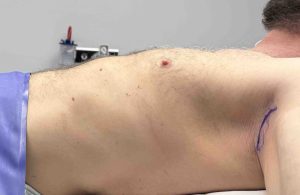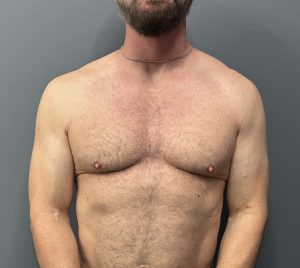Background: While pectoral implants are the male equivalent of female breast implants there are some obvious and not so obvious differences between them. The obvious differences are that in women the goals is to create a round mound that is only partially under the muscle. (if a submuscular approach is being used) It is not a muscle enhancing operation per se, the submuscular pocket is being used for different reasons. Conversely in men the goal is a pectoralis major muscle enhancement and the shape of the implant is thus more spread out to match the muscle contours. (round vs more quadrilateral/rectangular implant shape) The round breast implant is also always a bit softer because it is get in a bag while a pectoral implant, even when made of an XXS gel, it is still firmer as it is a solid implant.
While pectoral and breast implants can be placed through an axillary incision their passage through the skin incision into the submuscular pocket poses challenges given the different implant shapes. A silicone breast implant, if small enough, can undergo enough manual deformation, to be squeezed through the incision on its own. This is also true for most standard pectoral implant sizes as their form of deformation is to roll it into a cylinder-like shape.
But in both cases of larger breast and pectoral implants, manual deformation of the implant is not going to work. This is where the funnel insertion device is invaluable. It is a device that ia really made for breast implants and works best for that purpose due to their soft round shape. (Which more easily allows it to be converted into linear shape when compressed) But in larger pectoral implants this is more challenging as it more square firmer shape is not so easily squeezed into a linear form.
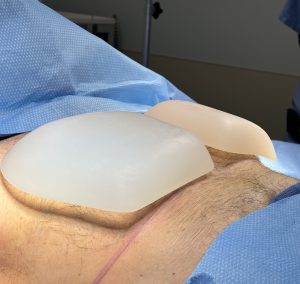
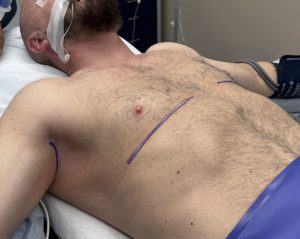
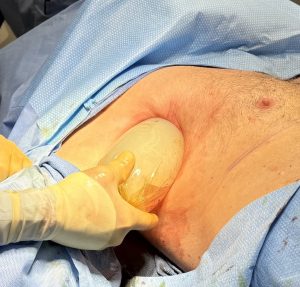
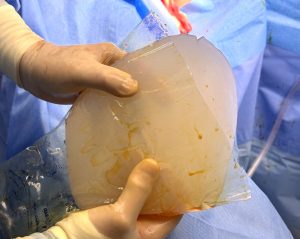
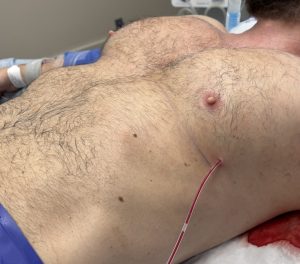
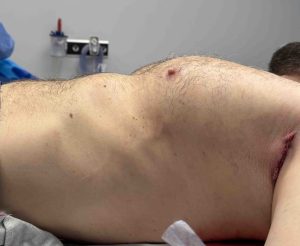
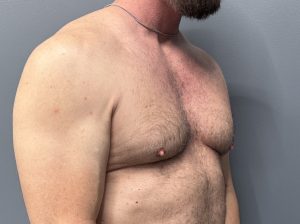
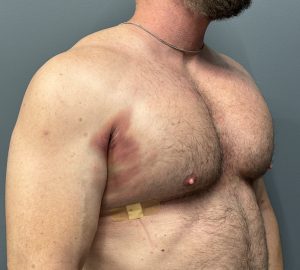
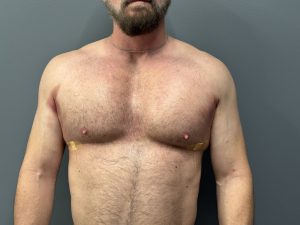
Putting in such a large pectoral implant would otherwise be very difficult through an axillary incision without the funnel device. This also explains the temporary bruising that occurs around the incision site due to the stretch on it from implant insertion.
Key Points:
1) XL pectoral implants generally refers to volumes that exceed 750cc.
2) XL pectoral implants can be placed through a high axillary incision with direct access to the submuscular pocket.
3) Given the limited size of the entrance tunnel the funnel device enables a pectoral implant to be placed that otherwise seems impossible.

